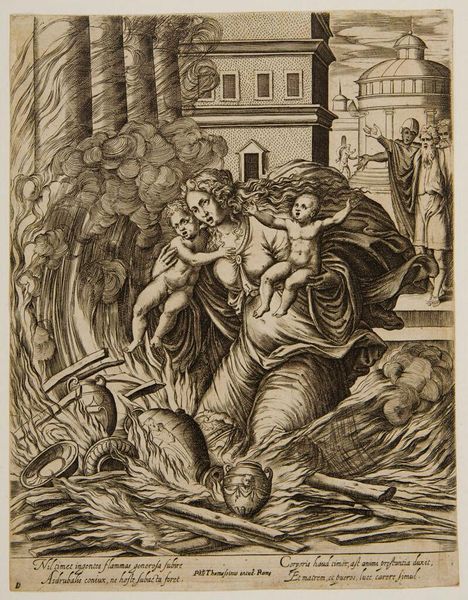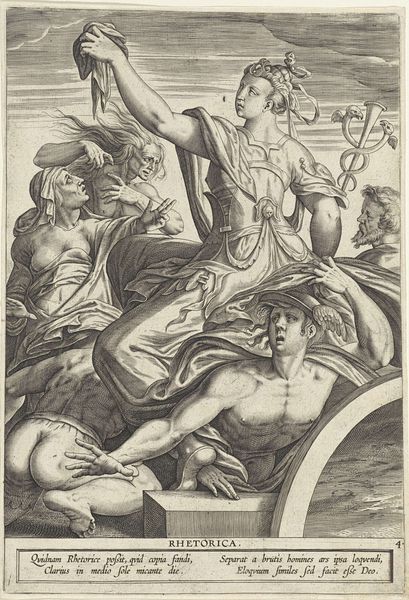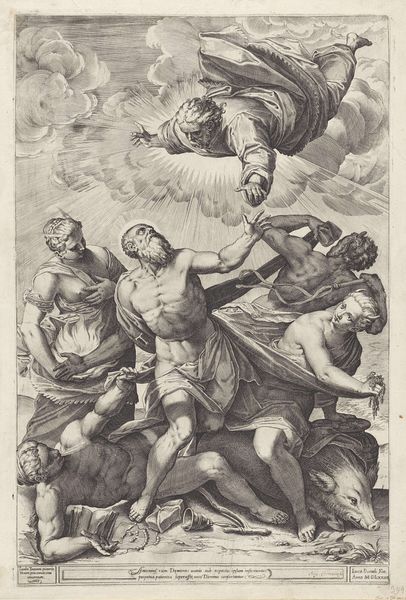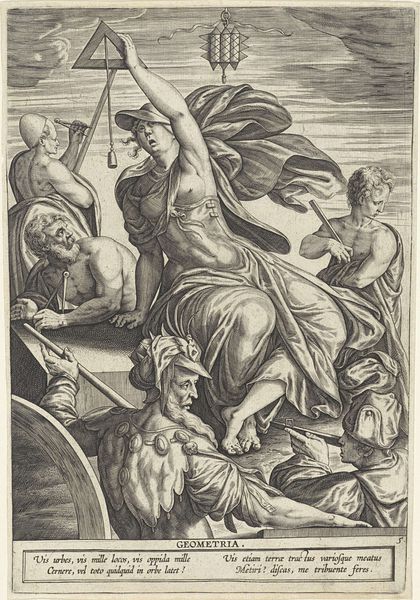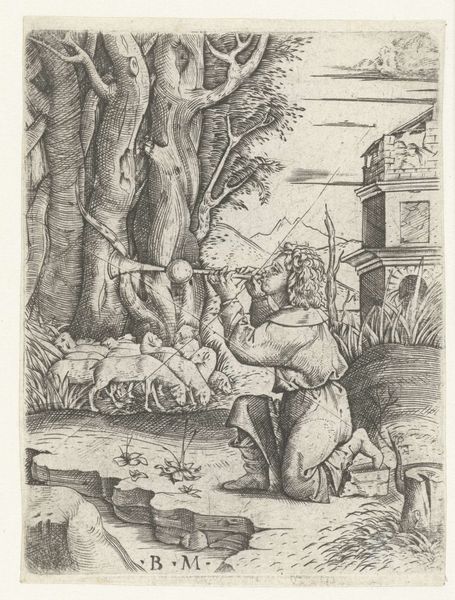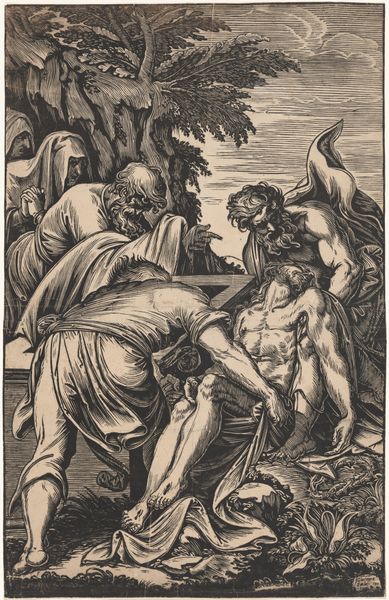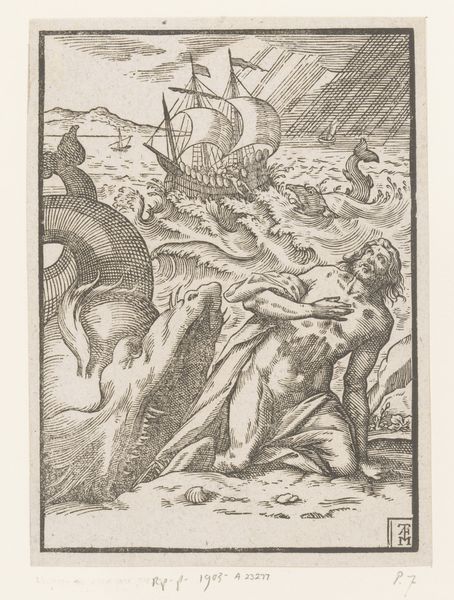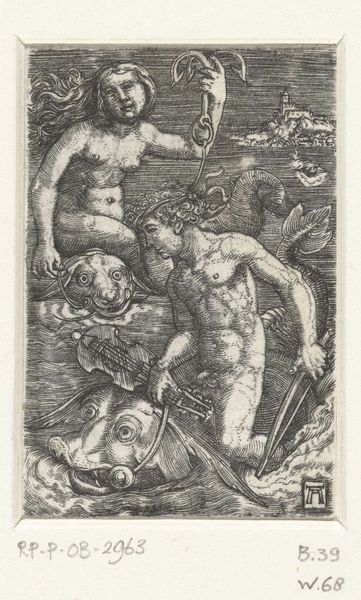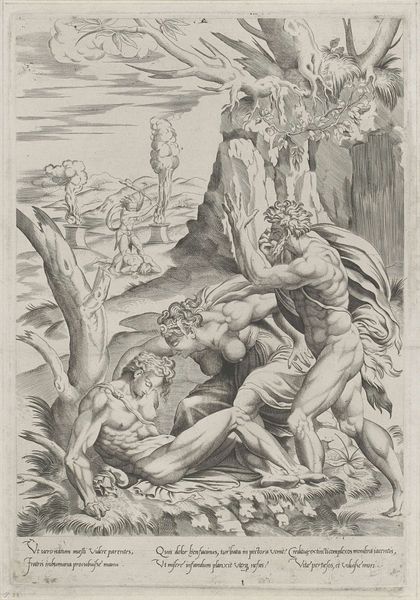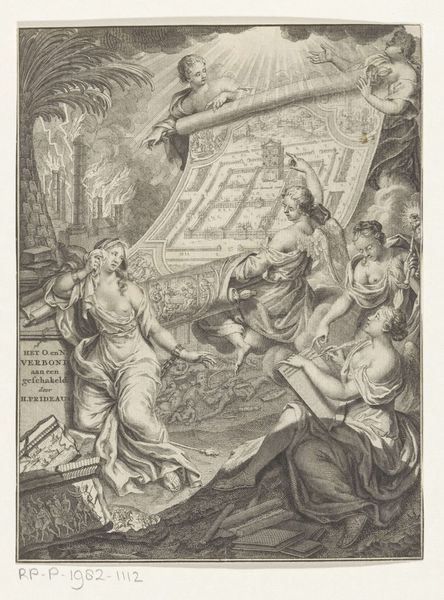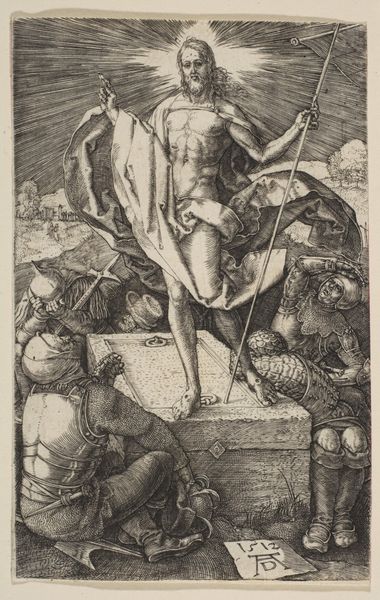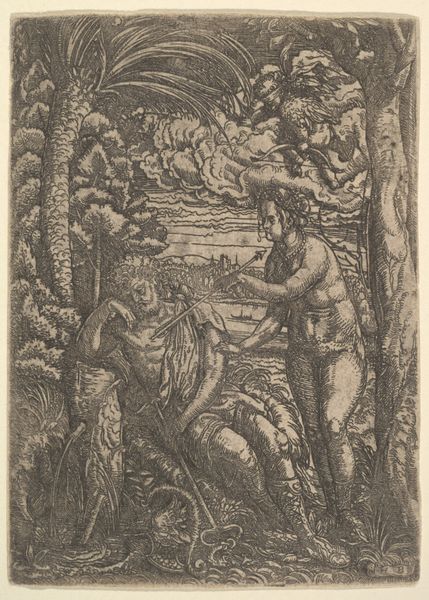
De vrouw van Asdrubal stort zich in de brandende tempel 1572 - 1622
0:00
0:00
print, etching, engraving
#
allegory
#
narrative-art
#
baroque
# print
#
etching
#
figuration
#
history-painting
#
engraving
Dimensions: height 224 mm, width 174 mm
Copyright: Rijks Museum: Open Domain
Editor: So, this print, "The Wife of Hasdrubal Throwing Herself into the Burning Temple," made sometime between 1572 and 1622 by Philippe Thomassin, is just… intense. The scene is so dramatic. What's your read on this piece? Curator: Look closely at the engraved lines, the material foundation of this narrative. The labor involved in creating this image – the painstaking process of etching and engraving – speaks to the value placed on disseminating this story and its underlying message. Notice the density of lines in the burning temple, contrasted with the relatively sparser treatment of the figures. Where does Thomassin want to fix the gaze of his viewers, and for what reasons? Editor: So you're saying the craftsmanship emphasizes certain elements of the narrative? What is the social impact on creating such detail to draw attention to certain features? Curator: Precisely. The means of production – the printmaking process – facilitated the mass dissemination of visual propaganda. What ideas were people discussing in that moment in history? Consider the social context, the market for prints like these. The Baroque style here isn't just aesthetic; it's a deliberate choice, aiming to evoke an emotional response to influence perceptions. Editor: That makes me look at it differently. I see how the detail, achieved through engraving, plays into both the dramatic story and the broader social landscape in early modern Europe. It emphasizes how crucial of an historical point is depicted by Philippe Thomassin. Curator: And consider the materiality of the print itself. It exists because of raw materials transformed through skilled labor, brought to market. The relationship to consumer culture is just as important as Thomassin’s inspiration to design such a print. Editor: Thanks for unpacking that. I was so focused on the image that I almost overlooked the importance of production and how it intertwines with the art's overall meaning. Curator: Exactly, every line is a decision rooted in material conditions and a social reality. Hopefully, through that lens, viewers will better contextualize prints like these.
Comments
No comments
Be the first to comment and join the conversation on the ultimate creative platform.
